After the Lunar New Year in 2024, the smartphone industry, which had been quiet for a long time, suddenly became abuzz with activity.
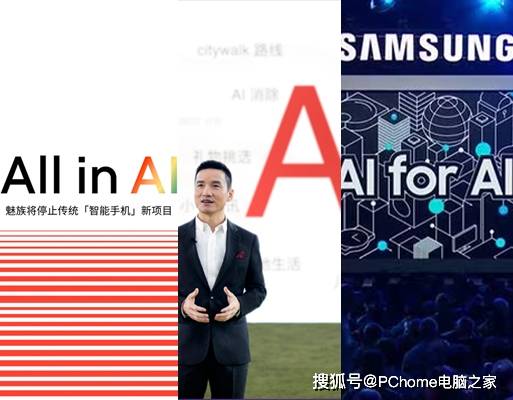
On February 18, Meizu officially announced that it would go “All in AI,” ceasing new traditional “smartphone” projects to fully invest in next-generation “AI for New Generations” devices.
Coincidentally, on the same day, OPPO founder, President, and CEO Chen Mingyong published an internal letter titled “Launching the New Era of AI Phones,” suggesting that 2024 marks the first year of AI phones. He predicted that AI’s impact on the mobile phone industry over the next five years could parallel the shift from feature phones to smartphones. Earlier, at the Galaxy Unpacked event, Samsung had released the Galaxy S24 series, branding it as “AI phones.”
The early 2024 flurry of AI phone product launches and strategic announcements from numerous smartphone manufacturers was no coincidence. Following the explosive popularity of ChatGPT, the technology sector has witnessed AI’s potential, and if smartphones could incorporate AI features, they would undoubtedly attract more consumers and experience a rejuvenation.
Smartphones: the Ideal Platform for Implementing AI
It’s well known that since the launch of ChatGPT in November 2022, the technology industry has been increasingly focused on AI-related technologies, with many companies launching their own large model products.
Reflecting on AI’s potential for imagination, Microsoft founder Bill Gates wrote on his personal website that “intelligent agents will not only change the way every person interacts with computers but will also disrupt the software industry, sparking the most significant computing revolution since the transformation from typed commands to graphical icons.”
Big model products are not mere castles in the air; they need different platforms to reach consumers. Thanks to its portability, the smartphone stands as the public’s computing platform, making it an ideal terminal for the implementation of AI technologies. OPPO’s Chief Product Officer, Liu Zuohu, commented, “In my personal estimation, smartphones will continue to be a crucial element of AI hardware for at least the next ten years.”
Indeed, Microsoft foresaw this trend as early as 2014, launching the AI chatbot Cortana and integrating it into Windows Phone. Unfortunately, Cortana didn’t break free from the shackles of traditional voice assistants’ stiffness and didn’t shift the smartphone industry as a whole.
In contrast, large AI models, driven by artificial intelligence technology, can interact based on conversation context and communicate like humans, thus greatly empowering smartphones to evolve into personal assistants for users. Bill Gates believes that within five years, each of us will have our own AI personal assistant agents.
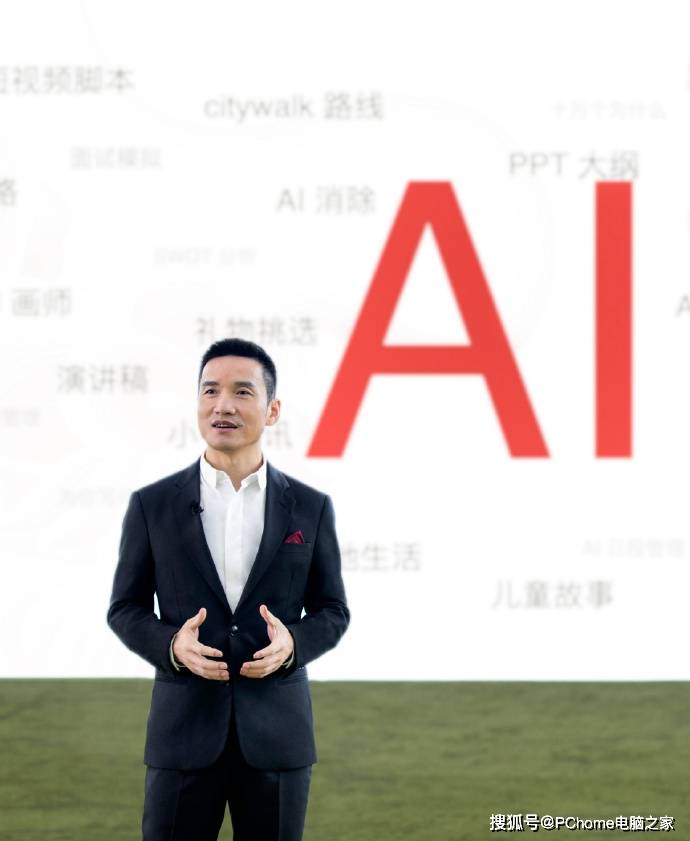
Given the vast potential of AI technology, smartphone manufacturers are fully preparing for its adoption. In January 2024, after launching the Find X7 series, Liu Zuohu declared, “If we don’t lay out our big models this year, it’s game over.”
The Limitations of Cloud AI and Why On-Device AI Phones Are the Way Forward
While smartphone manufacturers are busy integrating AI technologies, their approaches to implementing AI differ. Currently, there are two major development orientations for AI phones: one reduces the size of the device and relies on cloud-based computing, while the other develops traditional smartphones with a focus on on-device computational power.
At CES 2024, Rabbit introduced the Rabbit R1. Sporting a 2.88-inch touchscreen, a rotating camera, and a scroll wheel, the device is powered by a MediaTek 2.3GHz processor and 4GB of RAM. Small and marketed as a pocket AI device, the Rabbit R1 can perform various operations such as playing music, shopping, and sending messages.
Rabbit R1’s ability to perform numerous functions on relatively modest hardware is because key data processing and computations are done in the cloud, making the phone essentially a dedicated carrier for large AI models.
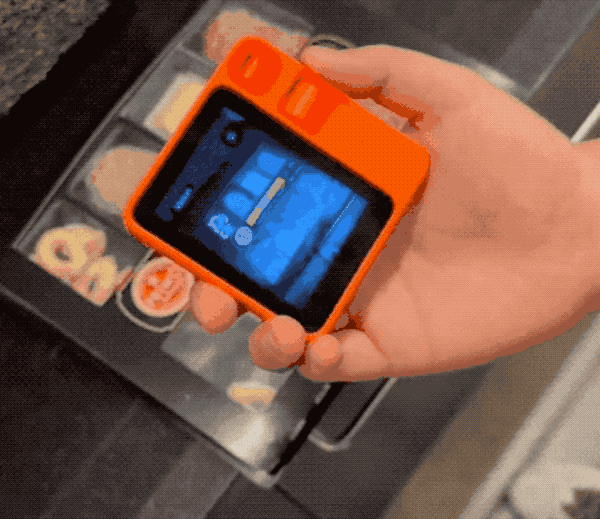 Rabbit R1’s use is marked by high latency
Rabbit R1’s use is marked by high latency
Because of its unique form factor, the Rabbit R1 sold out its first batch of 10,000 units immediately and 50,000 units within two weeks. However, customers reported that the usage experience was not up to par. Media reports pointed out that the Rabbit R1 was slow to respond and struggled to comprehend user commands in noisy environments. This led many to conclude that Rabbit R1 would have sufficed as an app.
Facing the imperfect user experience brought about by cloud-based AI technologies like Rabbit R1, smartphone manufacturers such as Xiaomi, OPPO, and Honor have been focusing on on-device large models.
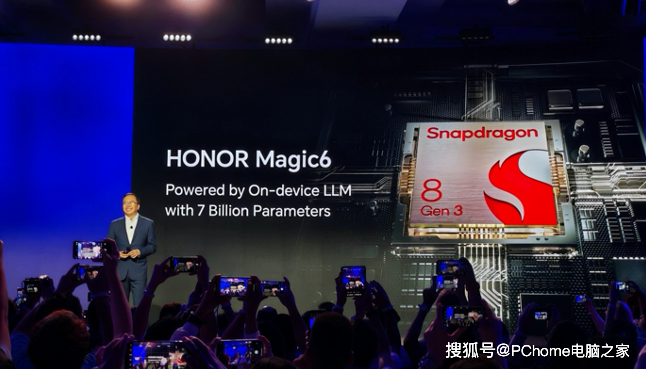
Regarding this, Honor CEO Zhao Ming stated, “To protect user privacy and safety without accessing users’ past ten years of work, cloud-based large models can’t write reports, so to truly help users better manage their own matters, we have to rely on on-device AI capabilities.” It is understood that Honor’s Magic6 supports a large on-device AI model with up to 7 billion parameters, offering more humanized preferences and understanding, providing personalized services for users.
In fact, with significant on-device computational power, smartphone AI functions extend beyond chat conversations to photography, calls, background removal, and other features.
 Xiaomi 14 Ultra’s UltraZoom Beta delivers clarity similar to optical zoom
Xiaomi 14 Ultra’s UltraZoom Beta delivers clarity similar to optical zoom
Taking Xiaomi 14 Ultra as an example, powered by the Diffusion large model, it supports UltraZoom Beta for extreme zooming capabilities. When shooting beyond 30x digital zoom, the model analyzes the optics to produce clear and natural images. Sample photos show that enabling UltraZoom Beta not only provides richer details but also improves the brightness of the image, mimicking the effect of optical zoom.
Therefore, AI large models supplement the limitations of smartphone optics, potentially ushering in a new era of computational photography, offering consumers a more convenient, clear, and stable shooting experience.
Sales Soar by 917%, AI Phones May Become the New “iPhone”
Since AI technology holds immense potential for enhancing the user experience of smartphones, AI phones could be the key breakthrough for manufacturers.
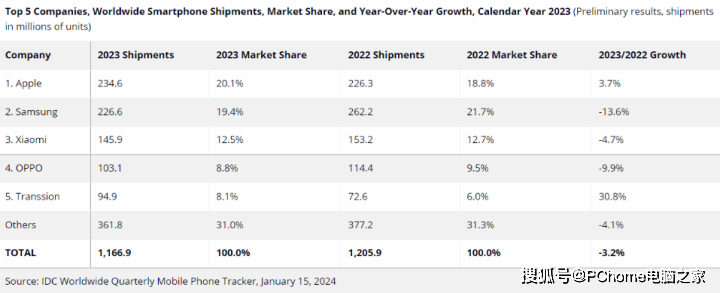
After nearly two decades, the smartphone market has moved past its high-growth era and its vibrancy is waning. IDC data shows that in 2023, global smartphone shipments reached 1.17 billion units, a 3.2% decline year over year, marking the lowest annual shipment record in a decade.
Against this backdrop, smartphone manufacturers anxiously await emerging technologies to rejuvenate the industry. As Chen Mingyong put it, AI’s impact on the industry over the next five years could be as significant as when smartphones replaced feature phones. AI might bring forth the “iPhone” of a new era.
Industry research firms are highly optimistic about the future of AI phones. Canalys forecasts that by 2027, AI phones will account for 45% of the total smartphone market share.
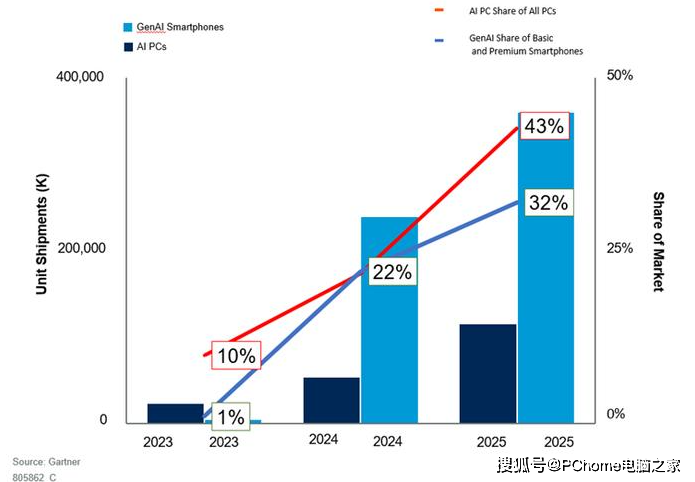
Mirroring the booming shipment volumes seen during the rise of smartphones, and due to the need for significant on-device computational power which traditional phones lack, AI phone shipments are also expected to see steady growth. Gartner estimates that in 2023, shipments of AI PCs and generative AI smartphones will reach 29 million units, skyrocketing to 295 million units by 2024, a 917% increase.
In summary, smartphones are increasingly becoming the ideal platform for AI technology, with their portability and widespread use making them a significant platform for AI applications. However, the debate between cloud AI and device-side AI has become a focal point in the application of AI in smartphones. Compared to cloud AI, which suffers from issues such as lag and delays, device-side AI smartphones are preferred due to their ability to perform AI functions more quickly and efficiently through local computing capabilities.
As AI technology continues to evolve and become more common, the sales volume of AI PCs and phones are expected to surge nearly tenfold in 2024, demonstrating AI’s significant impact on the mobile industry. AI is no longer an accessory feature of phones but has become an important driver of the industry’s development, comparable to how smartphones initially replaced feature phones.
With this in mind, only companies that offer outstanding AI technology and products will win a ticket to the next era. By continuously innovating and enhancing AI applications in phones, they meet the growing demand for intelligence from users and lead the mobile industry toward a smarter and more convenient future. Therefore, for smartphone manufacturers, integrating AI technology into their products and delivering smarter, more efficient user experiences is key to winning in the market competition.